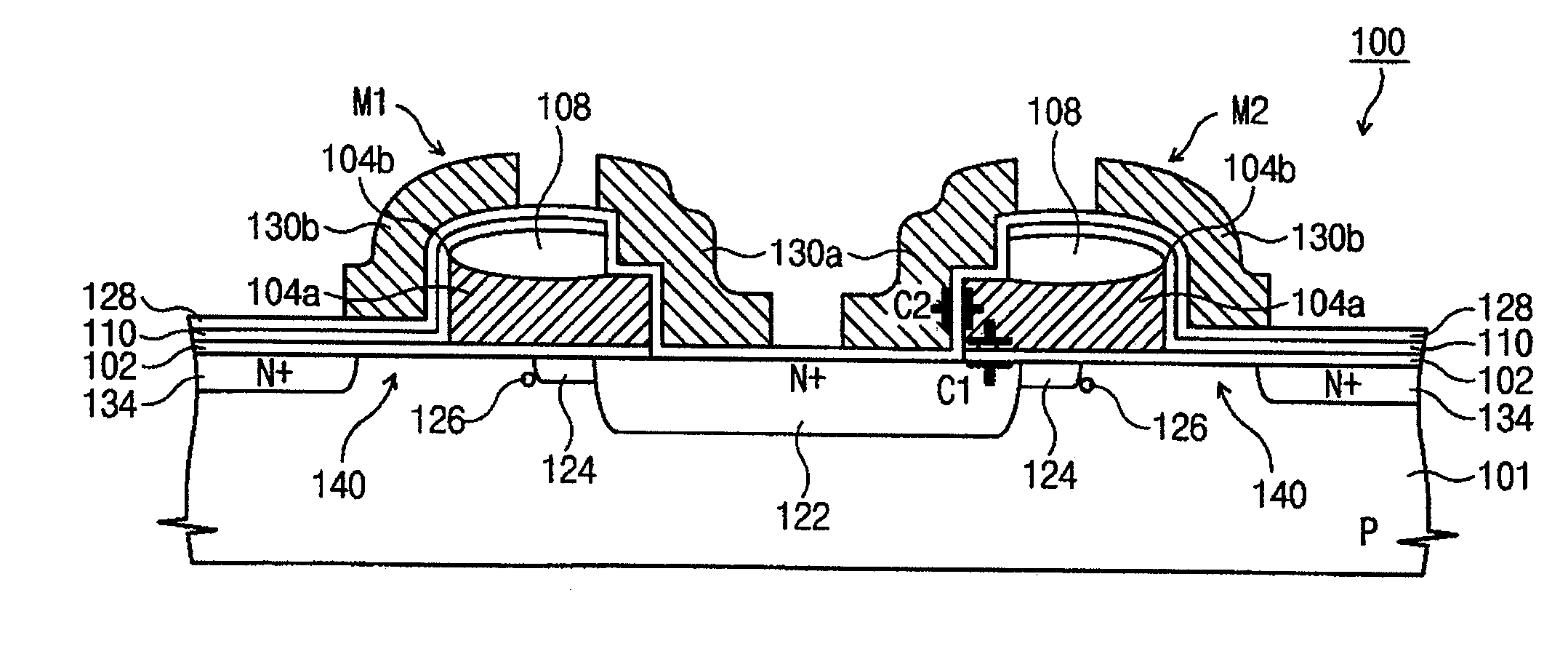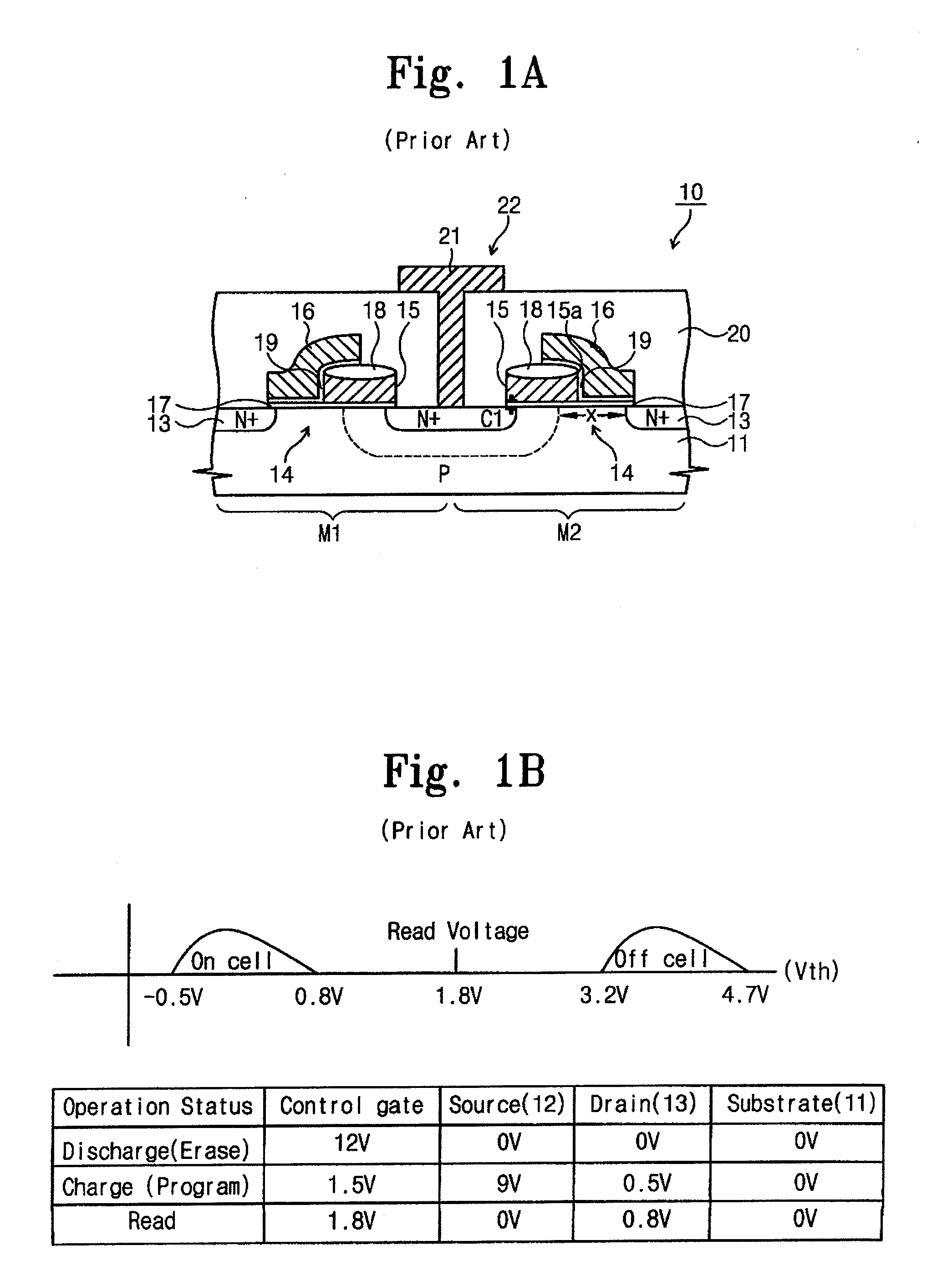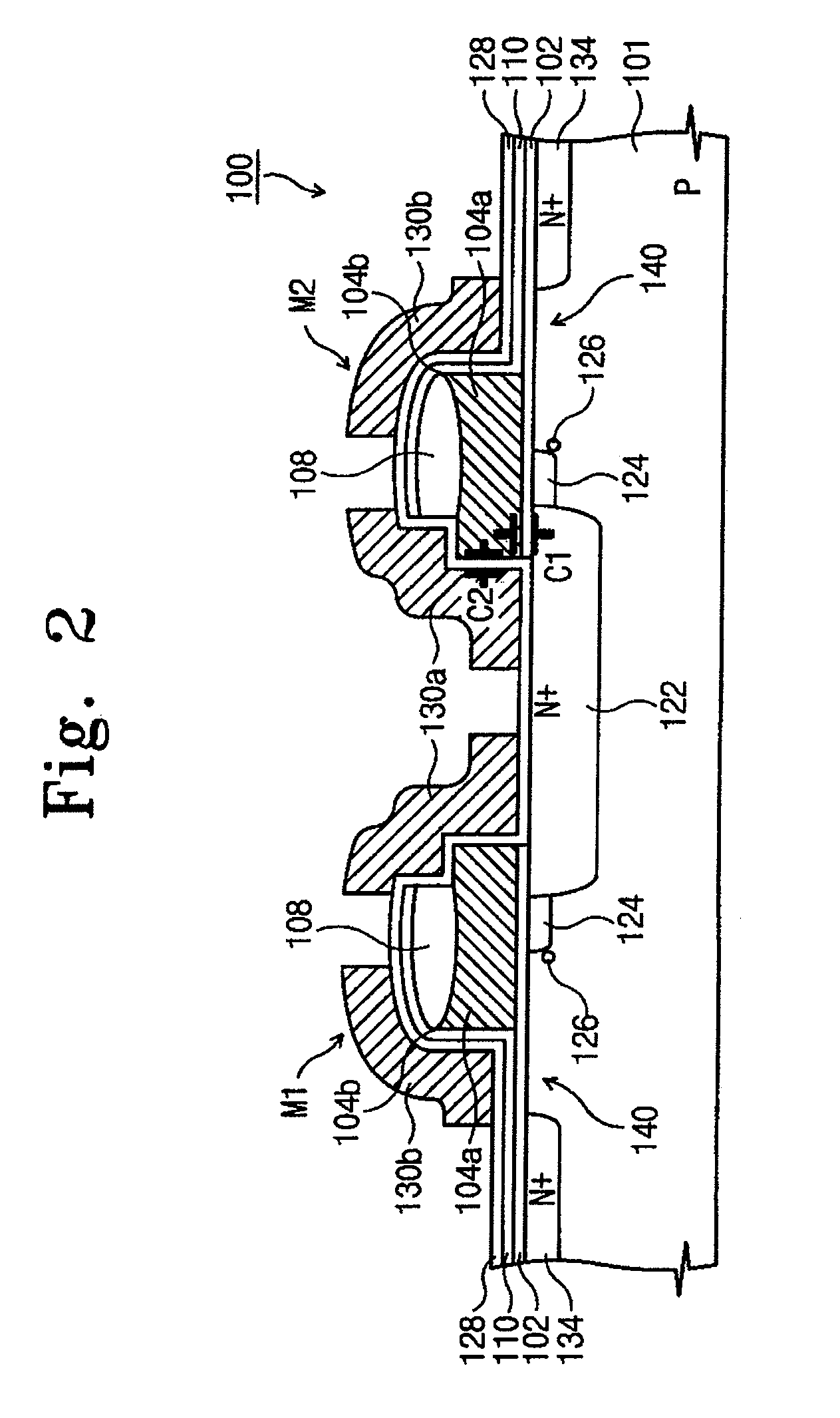Split gate non-volatile memory devices and methods of forming the same
a non-volatile memory and split-gate technology, applied in the direction of semiconductor devices, electrical devices, transistors, etc., can solve the problems of punch-through and junction breakdown due to an increase in the source depletion region, data retention and cycling endurance performance problems, etc., to achieve enhanced programming and erasing efficiency and performance, and the effect of increasing the floating gate coupling ratio
- Summary
- Abstract
- Description
- Claims
- Application Information
AI Technical Summary
Benefits of technology
Problems solved by technology
Method used
Image
Examples
Embodiment Construction
[0029] Exemplary embodiments of the invention will now be described more fully with reference to the accompanying drawings in which it is to be understood that the thickness and dimensions of the layers and regions are exaggerated for clarity. It is to be further understood that when a layer is described as being “on” or “over” another layer or substrate, such layer may be directly on the other layer or substrate, or intervening layers may also be present. Moreover, similar reference numerals used throughout the drawings denote elements having the same or similar functions.
[0030]FIG. 2 is a cross-sectional schematic view of a split gate non-volatile memory device (100) according to an exemplary embodiment of the invention. In particular, FIG. 2 depicts two split-gate memory cells M1 and M2 formed on a p-type semiconductor substrate layer (101). A plurality of diffusion regions (122) and (134) are formed in the substrate (101). In particular, in one exemplary embodiment, the diffusi...
PUM
 Login to View More
Login to View More Abstract
Description
Claims
Application Information
 Login to View More
Login to View More - R&D
- Intellectual Property
- Life Sciences
- Materials
- Tech Scout
- Unparalleled Data Quality
- Higher Quality Content
- 60% Fewer Hallucinations
Browse by: Latest US Patents, China's latest patents, Technical Efficacy Thesaurus, Application Domain, Technology Topic, Popular Technical Reports.
© 2025 PatSnap. All rights reserved.Legal|Privacy policy|Modern Slavery Act Transparency Statement|Sitemap|About US| Contact US: help@patsnap.com



